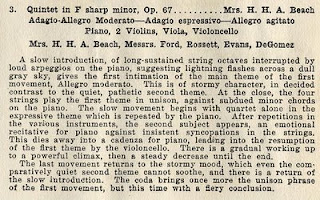 Scene from "Lucia di Lammermoor," at Her Majesty's Theatre: "Lucia," Mdlle. Piccolomini, "Edgardo," M. Giuglini, in The Illustrated London News (5/23/1857), from the Art, Music & Recreation Center's Picture File (Operas folder)
Scene from "Lucia di Lammermoor," at Her Majesty's Theatre: "Lucia," Mdlle. Piccolomini, "Edgardo," M. Giuglini, in The Illustrated London News (5/23/1857), from the Art, Music & Recreation Center's Picture File (Operas folder)The San Francisco Opera recently premiered The Bonesetter’s Daughter, an opera by Stewart Wallace based on the Amy Tan novel. There is a long history of creating operas from existing literary works from all times. Here is a listing of operas based upon famous literature.
Operas have been adapted from Greek and Roman classics–-L’Orfeo by Claudio Monteverdi is based upon Ovid, and Hector Berlioz’s Les Troyens is based Virgil’s Aenid. Other opera composers have found inspiration in Shakespeare’s works. Giuseppe Verdi alone wrote operas based upon Othello, MacBeth and Falstaff. Charles Gounod composed Roméo et Juliet and more recently Benjamin Britten wrote A Midsummer Night’s Dream.
Plays by Pierre Beaumarchais have provided the basis for two operatic masterworks—Wolfgang Amadeus Mozart’s Le nozze di Figaro (based upon La Folle journée) and Gioacchino Rossini’s Il barbiere di Siviglia. Victor Hugo has also been the source for great operas—both Verdi’s Rigoletto (based upon Le roi s’amuse) and Gaetano Donizetti’s Lucrezia Borgia.
Abbé Prevost’s novel Manon Lescaut has been adapted to the operatic stage by both Jules Massenet and Giacomo Puccini. Walter Scott’s Bride of Lammermoor became Lucia di Lammermoor by Donizetti. Modest Mussorgsky employed an Aleksander Pushkin short story as the basis for his opera Boris Godunov. Dubose Heyward’s novel Porgy became the basis for George Gershwin’s Porgy and Bess.
During the past few decades the San Francisco has commissioned several operas based upon great literature. Wallace Stegner’s novel Angle of Repose was the basis for an opera by Bay Area composer Andrew Imbrie in 1976. Pierre Choderlos de Laclos Les Liasons dangereuses became San Francisco Conservatory faculty member Conrad Susa’s 1994 opera The Dangerous Liasons. Tennessee William’s play A Streetcar Named Desire was composed as for the San Francisco Opera in 1998 by André Previn.
To learn more about opera you can visit the Oxford Music Online website through the Library’s Articles and Databases page which includes the full content of the New Grove Dictionary of Opera.
Additional reading:
Bringing Opera to Life: Operatic Acting and Stage Direction. (New York: Appleton-Century-Crofts, 1968. (Appendix C - Operas and background texts - details operas based on literary works).
Fate! Luck! Chance!: Amy Tan, Stewart Wallace, and The Making of The Bonesetter's Daughter Opera by Ken Smith. (San Francisco: Chronicle Books, 2008).
Literature as Opera by Gary Schmidgall (New York: Oxford University Press, 1977).
Opera as Drama by Joseph Kerman. New and revised edition. (Berkeley: University of California Press, 1988).
Shakespeare and Opera by Gary Schmidgall. (New York: Oxford University Press, 1990).
The Walter Scott Operas: An Analysis of Operas Based on The Works of Sir Walter Scott by Jerome Mitchell. (University: University of Alabama Press, 1977).
This entry originally appeared in At The Library 39 /12 (December 2008), p. 4.































